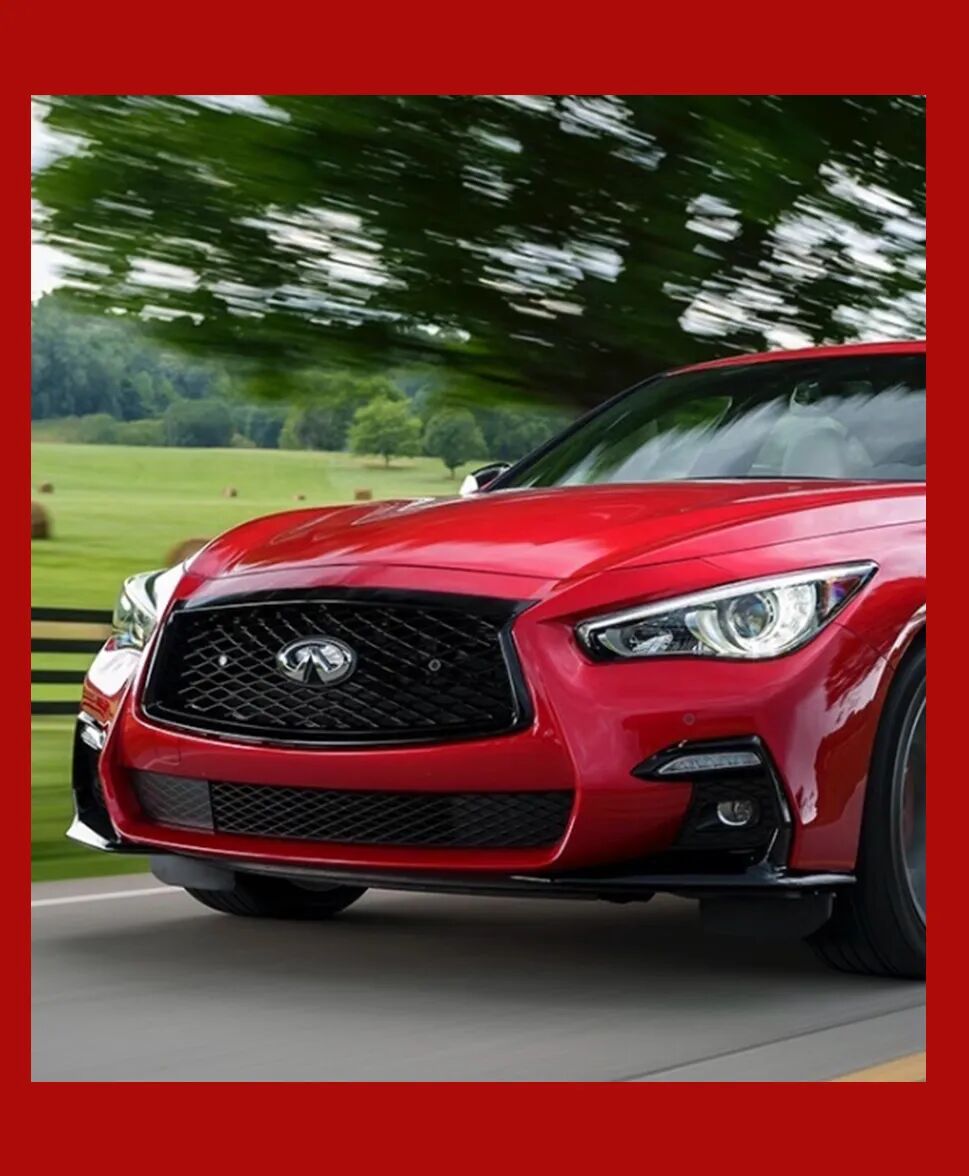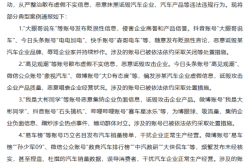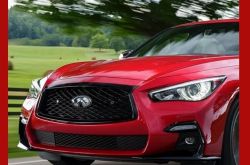Why Have Luxury Brands Taken Such a Tumble? Infiniti's Sales in the First Three Quarters Barely Exceed a Thousand Units
![]() 11/12 2025
11/12 2025
![]() 429
429

Written by: Xue Fei
Produced by: Five-Star Car Review
The once-glorious Japanese luxury brand Infiniti is now enduring its harshest winter since making its foray into the Chinese market.
The latest figures reveal that in the first three quarters of this year, Infiniti's sales in the Chinese market have just crossed the thousand-unit mark. This number not only represents a historic low for the brand since its entry into China but also pales in comparison to the weekly sales of a single mainstream luxury brand model. If this sales volume is distributed among Infiniti dealers still in operation across the country, each dealership would, on average, see only single-digit monthly sales.
From a peak of 48,400 units sold annually in 2017 to just over a thousand units in the first three quarters of this year, Infiniti has witnessed a precipitous decline in the Chinese market. How did this luxury brand, which once captivated countless Chinese consumers with its "Dare to Love" slogan, reach such a low point?
01 A Sharp Downturn in Sales
Recalling Infiniti's entry into China, it had its moments of brilliance. In 2014, leveraging the sponsorship of the popular variety show "Where Are We Going, Dad?" and the strategic dissemination of its "Dare to Love" brand slogan, Infiniti swiftly gained recognition in the Chinese market, achieving annual sales of 30,000 units. By 2017, Infiniti's annual sales had soared to a historic high of 48,400 units.

However, these moments of glory were short-lived. Public data indicates that from 2018 to 2024, Infiniti's annual sales were 44,400 units, 35,000 units, 25,700 units, 13,000 units, 6,300 units, 5,900 units, and 2,400 units, respectively, marking a continuous and significant decline over seven consecutive years.
As we enter 2025, the downward trajectory has not only persisted but has accelerated. Relevant data shows that Infiniti's sales in China during the first half of 2025 were a mere 713 units, a year-on-year decrease exceeding 30%. Sales in July stood at 102 units, August sales figures were not disclosed, and September sales reached 130 units. Based on these estimates, the overall sales for the first three quarters are also just over a thousand units, even falling short of the weekly sales of a single mainstream luxury brand model.
According to media reports, Infiniti's sales network is now virtually paralyzed. Many dealers have effectively ceased restocking and are merely depleting their existing inventory. Some 4S stores have even transitioned to selling models from other brands.
02 A Restructuring Market Landscape
Infiniti's decline coincides with a profound restructuring of the Chinese luxury car market.
On one hand, Chinese high-end new energy brands, exemplified by NIO, Li Auto, and Zeekr, have rapidly ascended, breaking the market monopoly traditionally held by luxury brands. Data reveals that in the first three quarters of 2025, sales of new energy vehicles in China reached 11.228 million units, a year-on-year increase of 34.9%, accounting for 46.1% of total new car sales. Among these, BYD led the pack with 2.5422 million retail sales, closely followed by Geely and Changan.
On the other hand, the Matthew effect within traditional luxury brands has become increasingly pronounced. BMW, Mercedes-Benz, and Audi, the three major German luxury car brands, have maintained robust sales despite some impact from price reduction strategies and the launch of new energy models. In the first three quarters of 2025, BMW and Mercedes-Benz both sold over 400,000 units in China, while Audi sold over 200,000 units.
In contrast, Infiniti, with just over a thousand units sold in the first three quarters, is gradually being "abandoned" by the market. The reason lies in the fact that Infiniti's main models sold in China, the QX60 and QX50, have been on the market for 4 and 7 years, respectively, without undergoing a complete generation change. In the fiercely competitive Chinese luxury car market, this product update pace clearly fails to keep pace with consumer demand changes.
More critically, at a time when new energy vehicles have become the mainstream in the luxury market, Infiniti's electrified products have remained "all talk and no action." Although Infiniti announced its "Towards 2030" electrification strategy as early as 2022, promising to launch multiple pure electric models, and unveiled its Vision Qe concept car, positioned as a pure electric model, at the 2024 Beijing Auto Show, claiming it could become the brand's first mass-produced electric car in China, to this day, it still has no mass-produced pure electric models for sale in China.
In the eyes of industry insiders, "In today's Chinese luxury car market, not having electrified products is akin to a warrior without weapons." Relevant data shows that the penetration rate of new energy vehicles in the luxury market above 300,000 yuan has exceeded 40%. Missing out on this wave of electrification means that Infiniti has essentially exited the mainstream competitive ranks.
03 Strategic Missteps and Vague Positioning
A deeper reason lies in Infiniti's sluggish response to market changes in China and its insufficient commitment to localization strategies.

Tracing Infiniti's development trajectory in China, from its official entry into the Chinese mainland in 2007 to the establishment of Infiniti China in July 2010, the relocation of Infiniti's global headquarters to Hong Kong in May 2012, the localization achieved by the end of 2014, and the establishment of Dongfeng Infiniti Automobile Co., Ltd. in September 2014, all demonstrated a high degree of importance attached to the Chinese market. However, this forward-looking layout has not been continuously deepened. In 2020, Infiniti's global headquarters was relocated from Hong Kong back to Japan, a move interpreted by the industry as a downgrading of its strategic position in the Chinese market.
According to media reports, Dongfeng Infiniti once suffered from excessive depletion of dealer resources and a chaotic management system due to the aggressive management style of its former general manager, Dai Lei. Although Dai Lei has departed, the management issues have not been fundamentally resolved, with problems such as lengthy processes and inefficient decision-making continuing to plague operations. From product planning to marketing decisions, everything undergoes lengthy reporting and approval processes, leading to missed market opportunities.
In contrast, German luxury brands have implemented much deeper localization strategies in the Chinese market. BMW has not only established its largest R&D system outside Germany in China but has also specifically developed long-wheelbase models tailored to Chinese consumer needs. Audi has collaborated with local technology companies to develop intelligent cockpit systems that align with Chinese users' habits.
In the eyes of automotive industry insiders, "China has become the innovation hub for global automotive technology. Any brand that fails to cultivate deeply here will struggle to keep pace with the market."
As the Chinese automotive market undergoes consumption upgrades and intensified competition, Infiniti's brand positioning has become increasingly ambiguous. In terms of price, it cannot compete head-on with BBA; in terms of personalization, it falls short of brands like Porsche; and in terms of cost-effectiveness, it has been surpassed by second-tier luxury brands like Cadillac and Volvo. To this day, Infiniti has yet to carve out its unique position in the luxury brand lineup.
This vague brand positioning has directly led to a continuous shrinkage of marketing investments. Compared to a decade ago when it sponsored "Where Are We Going, Dad?" and "The Amazing Race," Infiniti's presence in marketing activities has significantly diminished in recent years, with a weaker presence on social media and digital marketing channels.
In the fiercely competitive automotive industry, reduced investment leads to lower brand visibility and further sales declines. Worse sales lead to more cautious market investments by the brand. Over time, a vicious cycle of marketing budget cuts and sales declines has formed.
04 What Lies Ahead
Faced with this grave situation, what does the future hold for Infiniti? There are various speculations within the industry.
One viewpoint suggests that Infiniti may follow in the footsteps of Acura and eventually exit the Chinese market. Currently, multiple traditional luxury brands have encountered severe challenges in the Chinese market. Even brands like Lexus and Cadillac, which are performing relatively well, are facing pressure from electrification transitions.
There are also analysts who believe that Infiniti still has a glimmer of hope. The Chinese market holds strategic significance for any global automotive brand. If Infiniti can accelerate the introduction of electrified products, deepen local cooperation, and redefine its brand positioning, there is still a chance for a turnaround.
Currently, the Chinese luxury car market is shifting from "brand-oriented" to "product-oriented." Consumers are increasingly concerned about the intelligent level, electrification performance, and user experience of products rather than simply valuing the brand's historical aura.
This shift provides an opportunity for Chinese brands with technological advantages to overtake, while also posing a survival threat to traditional luxury brands with slow product updates and lagging electrification transitions.
It is reported that Infiniti plans to launch 23 electrified models (including 15 pure electric models) by 2030, aiming to achieve that electrified models account for over 50% of its global sales.
At that time, in the ever-changing competitive environment of the Chinese market, whether Infiniti can turn the tide against the wind remains highly anticipated by the market.
------- The end -------






